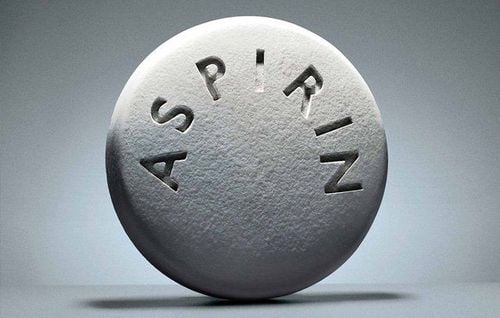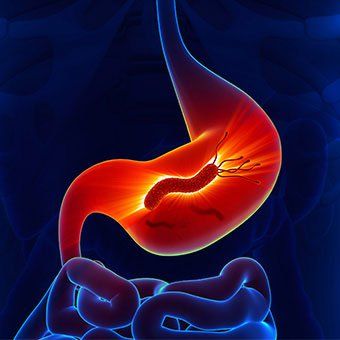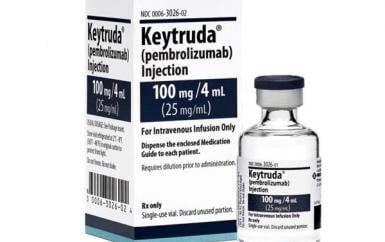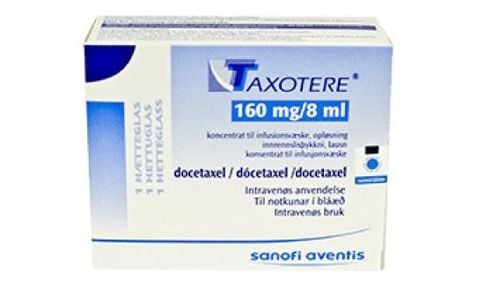This is an automatically translated article.
Post by Master, Doctor Mai Vien Phuong - Gastrointestinal Endoscopy - Department of Medical Examination & Internal Medicine - Vinmec Central Park International General Hospital.
Helicobacter pylori (H. pylori) is a gram-negative bacteria that lives in the stomach environment. However, infection with helicobacter pylori not only affects the gastric system, but is also associated with hepatobiliary diseases.
1. Update the basic information about H.pylori
H. pylori is a gram-negative, S-shaped, or spirochete bacterium of the genus Helicobacteraceae. In 1979, R. Warren identified Campylobacter pylori and suggested that this microorganism is the causative agent of gastritis. In 1982, BJ Marshall isolated the bacterium H. pylori and showed the relationship between its persistence and the development of peptic ulcer disease.
According to modern concepts, the main habitat (live, develop and reproduce) of H. pylori is the epidermal mucus layer in the pit of the stomach and the first part of the duodenum. H. pylori is usually not detected in the subepithelial space of the stomach nor in the epithelium of the gastric glands. The ability of microorganisms to move through the mucus layer occurs due to the presence of a number of mobile flagellates, which contribute to the movement of bacteria to areas with suitable conditions for survival.
To date, the main transmission route of H. pylori bacteria is unknown. The infection most often occurs from person to person. Possible routes of transmission, such as fecal-oral, mouth-to-mouth, and stomach-to-mouth, have been comprehensively studied in recent years. H. pylori can be isolated from various body fluids. The causative agent is detected in dental plaque, saliva, tonsil tissue, canals and on the oral mucosa (including on the tongue surface), using polymerase chain reaction assays. Particular attention is paid to environmental pollution associated with the consumption of water and food containing H. pylori. Most authors consider the transmission of pathogens in the family as the main and most significant route. This opinion is confirmed by factors, such as close interpersonal contact in the family, the single socioeconomic status of family members, and genetic predisposition to with the existence of H. pylori.
2. Helicobacter pylori infection and hepatobiliary diseases
2.1. Nonalcoholic fatty liver disease (NAFLD) NAFLD refers to a wide range of disorders in which fatty liver is observed by imaging tests or histology. The aforementioned condition is believed to be driven by insulin resistance caused by molecules whose production is stimulated by H. pylori infection such as tumor necrosis factor and C-reactive protein.
Read More Furthermore, a decrease in the production of adiponectin, a molecule that inhibits fatty acid deposition in the liver, was observed in H. pylori patients. Bacteria can reach the liver through the bile and lead to hepatitis.
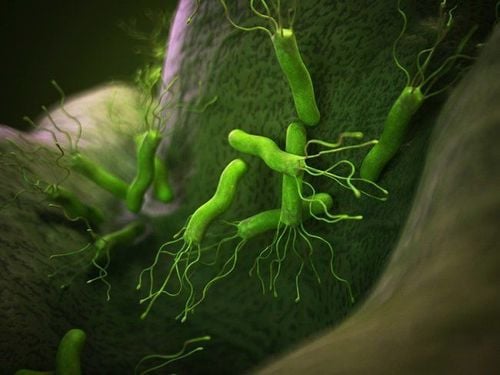
The prevalence of helicobacter pylori infection in patients with HBV-related HCC (68.9%) and HBV-negative HCC (33.3%) was higher when compared with controls (P <0.001). In this sense, studies agree with screening for H. pylori infection, followed by eradication of bacteria in patients with liver disorders, to prevent progression of existing disease and onset of cancer.
2.3. Cholecystitis and Gallstones Recent research has investigated a possible risk relationship between helicobacter pylori infection and the development of gallstones and cholecystitis. Regarding the first, studies have shown that the presence of H. pylori bacteria in the bile can be a risk factor for its development. Furthermore, among other studies, a meta-analysis demonstrated a positive association between helicobacter pylori infection and chronic cholecystitis/cholangiolithiasis (OR = 3,022; 95% CI: 1.897-4.815; I2 = 20.1%). Among the possible explanations, it is believed that H. pylori may infect the biliary system, causing chronic inflammation in its mucosa and as a result leading to impaired acid secretion and decreased salt solubility. calcium in the bile, thereby forming gallstones.
Please dial HOTLINE for more information or register for an appointment HERE. Download MyVinmec app to make appointments faster and to manage your bookings easily.
References:
Santos MLC, de Brito BB, da Silva FAF, Sampaio MM, Marques HS, Oliveira e Silva N, de Magalhães Queiroz DM, de Melo FF. Helicobacter pylori infection: Beyond gastric manifestations. World J Gastroenterol 2020; 26(28): 4076-4093 [PMID: 32821071 DOI: 10.3748/wjg.v26.i28.4076]






